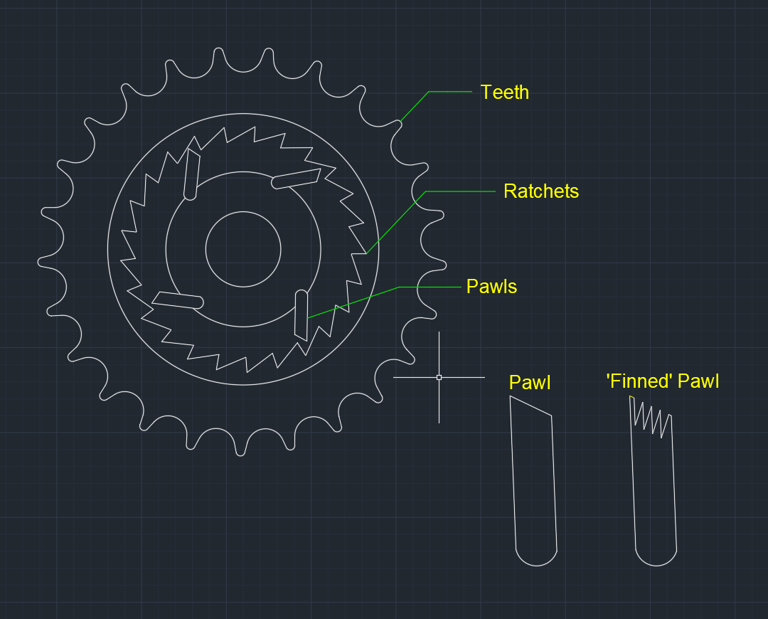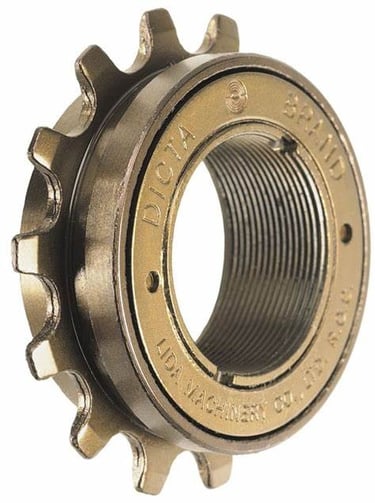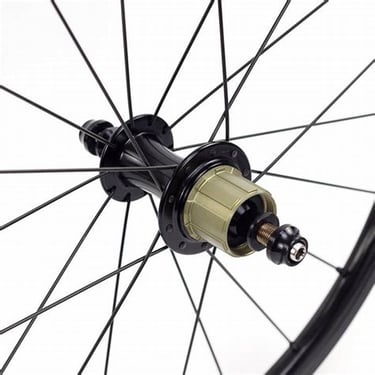On your rear hub you have a part that drives your bike when you pedal. There are two main types of drives: freewheels and cassettes (freehub).
Other drives include worm, clutch, and freecoaster. Freecoasters are found in freestyle and sprag clutch types are in racing. Let's ignore those other drives and look at what the majority of bikes still use.
The operating principles for cassettes and freewheels are the same. Little ramped teeth called ratchets are inside, and spring-loaded pawls catch on the rachets when pedaling. The angle of the ratchets allows the hub to spin freely when not pedaling. The teeth are on the outside and mesh with the chain.
The number of ratchets and pawls determines the points of engagement. POE is often cited when shopping for new freewheels or cassettes. Things can get all super techie when it comes to bike drivetrains, and we know no one cares about that. POE is simply how many places the pawls and ratchets hit. Some pawls have micro teeth, sometimes called 'finned,' and those are used in high POE setups. Here is an example: a 3/36 setup is 3 pawls and 36 POE. Some setups are 9/108. 9 pawls, 108 POE.
Dividing POE by 360 gives the angle of engagement. The AOE is how many degrees the pawl needs to move to catch a ratchet. 360/108= 3.33 degrees. 360/36= 10 degrees. Got it?
High POE gives quicker (almost instant) engagement when pedaling and little to no 'dead spots.' More power is transmitted. The disadvantage is weight increases with more pawls and more resistance (drag) when coasting. The resistance is caused by more pawls dragging against more ratchets. If you like that mad hornet's nest sound, then high POE is for you!
Lower POE is less noisy, less draggy, and usually a little lighter. The downside is noticeable 'dead spots' where the pawl is not engaging with the ratchet. You'll feel this in the pedals. If you have to move your cranks 3.33 degrees or 10 degrees, which do you think you'll feel?
There is also worm drive and sprag clutch setups. Those are instant engagement without the drag and noise and operate a little differently. That's an article you can find over at Onyx or Supercross BMX.
The difference between freewheels and cassettes is the freewheel is a self-contained unit and threads onto the hub. Freewheels can be a bit heavy. Freewheels also limit the amount of chainline spacing that can be done. This can also limit what frames and cranksets a freewheel equipped bike can use. Freewheels are robust, and usually not worth servicing. Unscrew the old one and screw a new one on.
The freehub, commonly called a cassette after the name of the gears that go on it, is partially built into the hub. The ratchets are on a ring pressed inside the hub. The freehub body contains the pawls and is splined to accept cogs. Cogs are the little gears. A retaining nut holds the cassette body to the hub.
BMX didn't fully adopt the cassette until the 2000's, almost 15 years after its invention. BMX's solution was to replace freewheels as needed, and for gear changes many riders used a flip-flop hub. A flip-flop hub is threaded on both sides so a freewheel could be mounted on each side. If you needed to do a rear gear change you flipped the wheel around and used your other freewheel.
Is one better than the other? Both perform well. For BMX either works great. Most frames these days don't work well with the freewheel due to clearance issues. Most BMX bikes today use cassettes though some new entry level models and many older bikes still use freewheels.


(on our mobile website the pics are at the bottom)




